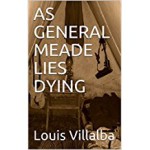Owen Dromgould had run his fingers over the bark of the trees. He could tell the difference in the outline of their leaves; he could tell the thorns of gorse and bramble. He knew birds from their song, dogs from their bark, cats from the touch of them on his legs. There were the letters on the gravestones, the stops of the organ, his violin. He could see red, berries on holly and cotoneaster. He could smell lavender and thyme.
All that could not be taken from him. And it didn’t matter if, overnight, the colour had worn off the kitchen knobs. It didn’t matter if the china light-shade in the kitchen had a crack he hadn’t heard about. What mattered was damage done to something as fragile as a dream.
From “The Piano Tuner’s Wife,” by William Trevor
Endowed with tango-like rhythm, William Trevor’s prose describes the vision of the blind. He does not only point out the enhanced sensitivity of the other senses that compensate for the loss of sight, but also the enriched perspicacity of the blind’s mind: “It didn’t matter if the china light-shade in the kitchen had a crack he hadn’t heard about. What mattered was damage done to something as fragile as a dream.” In a world where physical beauty is grossly overvalued, it is time that we learn from the vision of the blind.



































